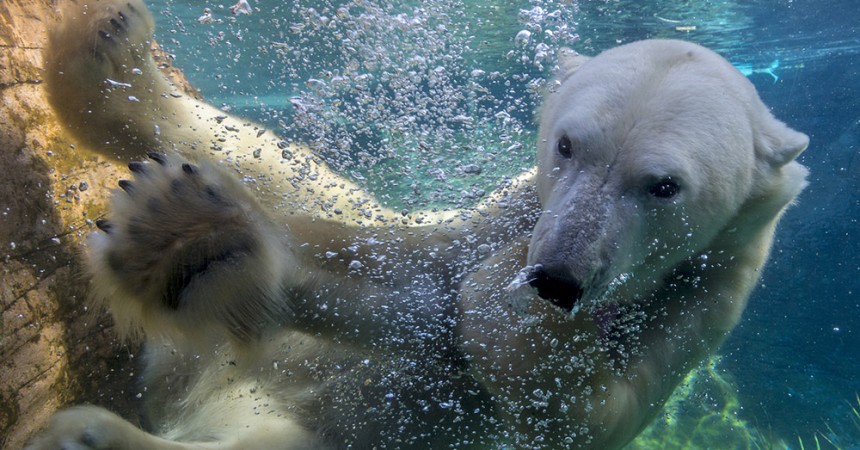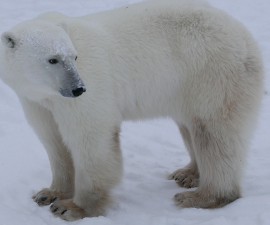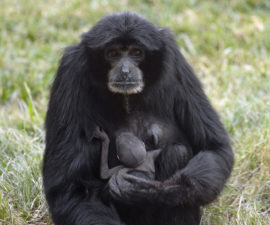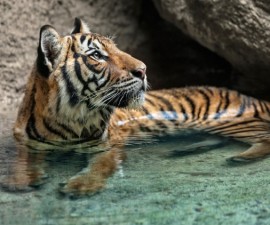One of the most frequently asked questions during the summer months at Polar Bear Plunge is “Why are the bears green?” The answer may surprise you!
The outer guard hairs on a polar bear’s coat are clear and hollow (like a straw), which means they often take on the color of whatever they happened to roll in. Wild bears mostly have only snow and ice to lie on, so they usually maintain the bright white color that you imagine when you picture a polar bear. Here at the Zoo, we like to provide Kalluk, Tatqiq, and Chinook with as many different substrates in their habitat as we can so that they have options when they choose to rest or roll around. This gives them an opportunity to exhibit species-specific behavior. Throughout their habitat they have access to grass, sand, mulch, dirt, pine needles, hay, and a couple of hammocks made out of used fire hose. You may have seen Chinook masquerading as a brown bear after a prolonged roll in the mulch or dirt.

That brings me back to the original question of “Why are the polar bears green?” Remember those hollow hairs? That tiny space in each hair is a great place for algae to live. The bears’ main exhibit pool is fresh water and during the summer, when the weather is warmer than usual, algae begin to grow on the pool floor. When our bears swim and brush up along the bottom or sides of the pool, they pick up some of the algae, which continue to grow inside the individual hairs! It is not a concern for the bears as we have an elaborate filtration system and excellent water quality team. It is unlikely that they even notice it, but it does give them a bit of a punk rock look. In the winter, around Christmas time, they look downright festive!
The discoloration will last until the bears molt in the springtime. For about two weeks in March to April, our bears glisten with a brilliant white color. Once they start rolling around in all that substrate we provide, they begin to take on the color of their environment and the cycle begins again.
Matthew Price is a senior keeper at the San Diego Zoo. Read his previous blog, Springtime for Polar Bears.





